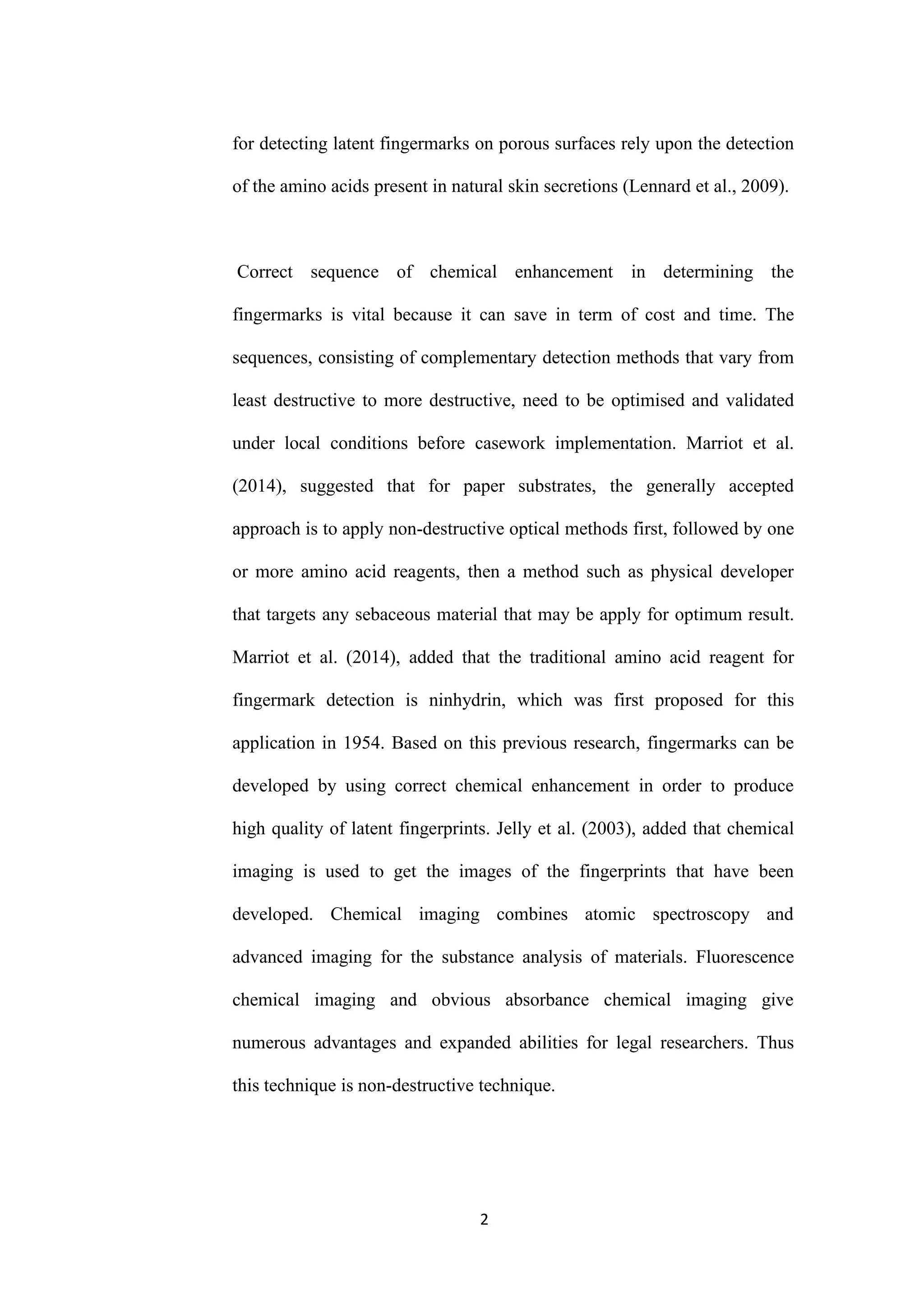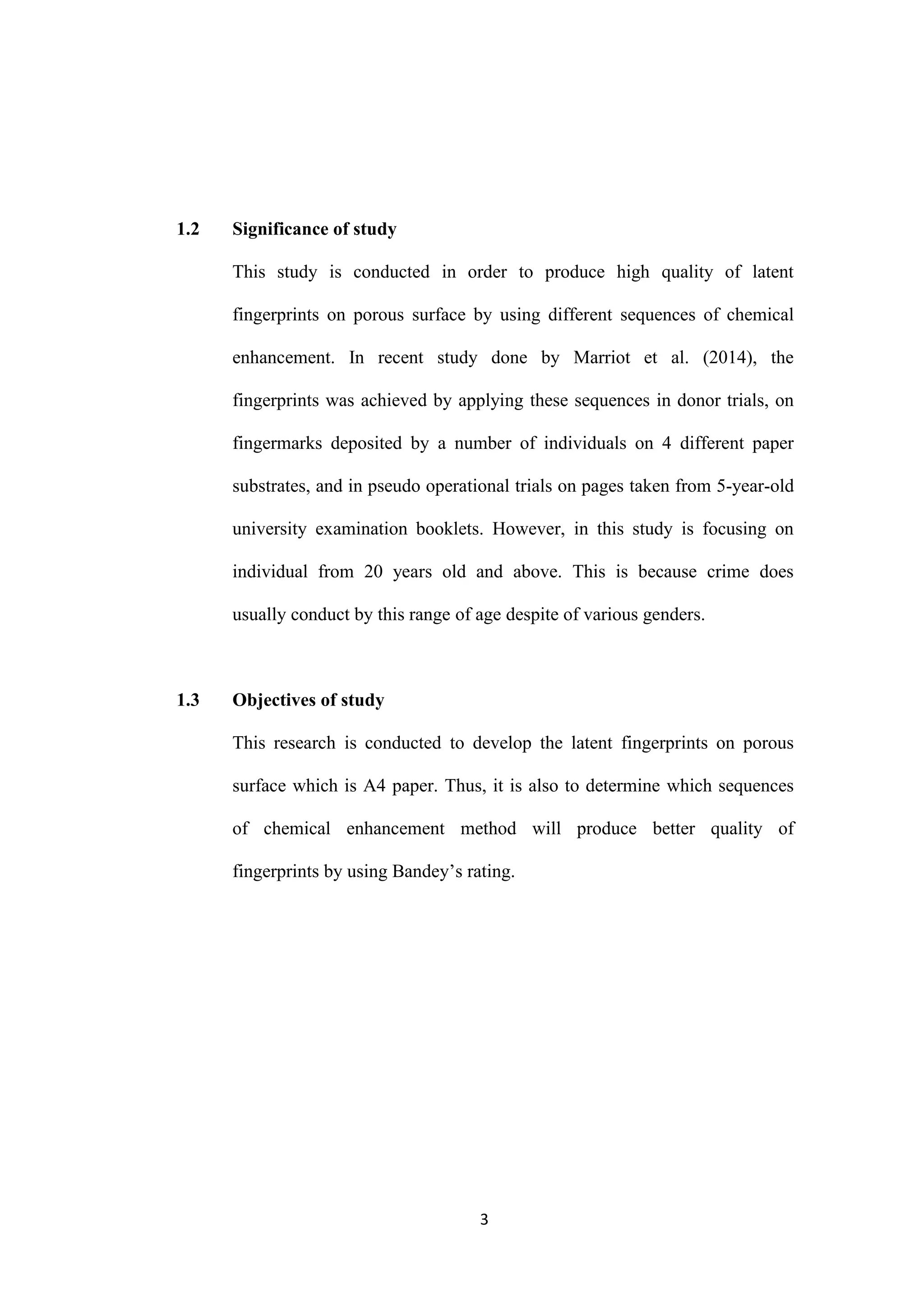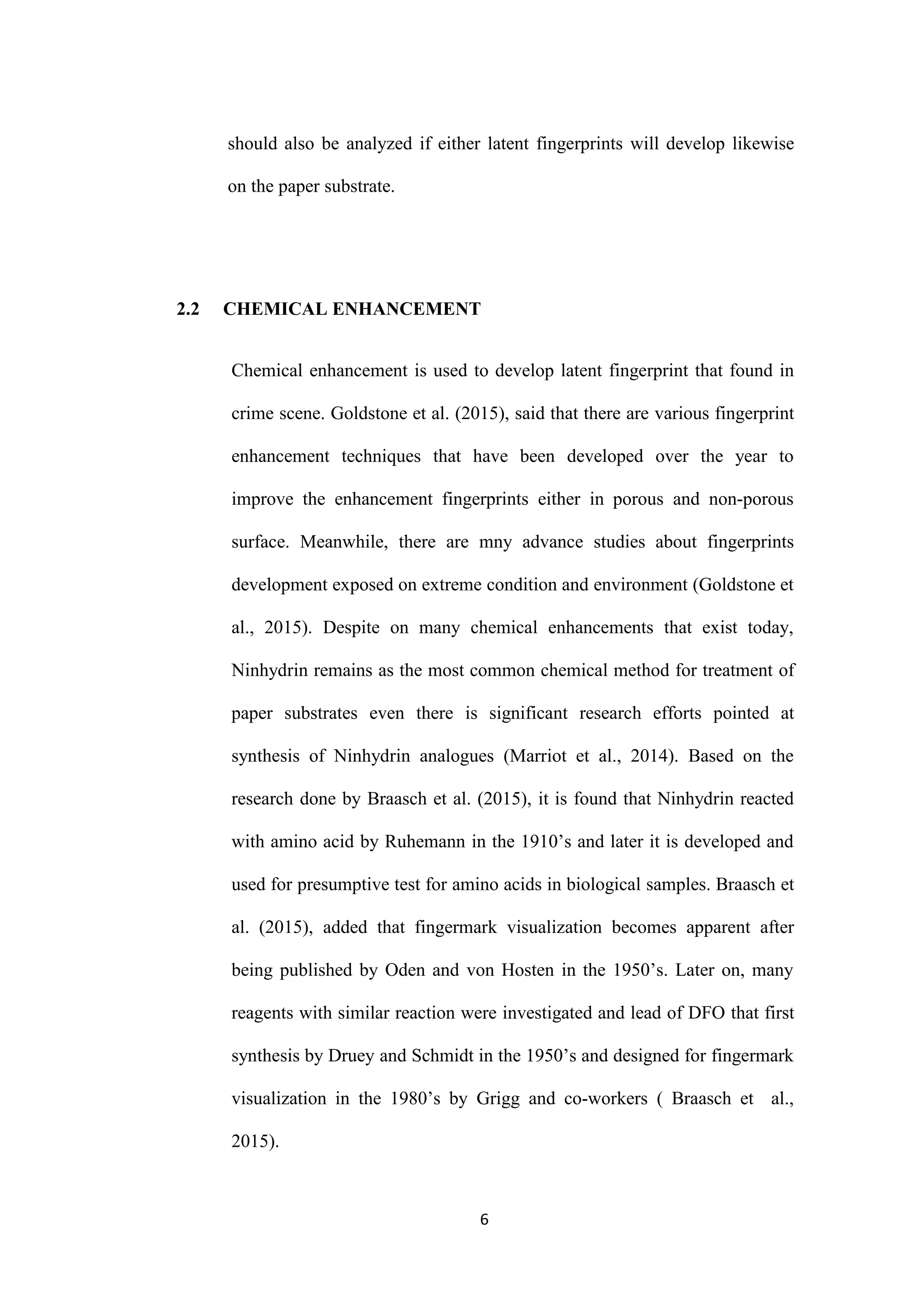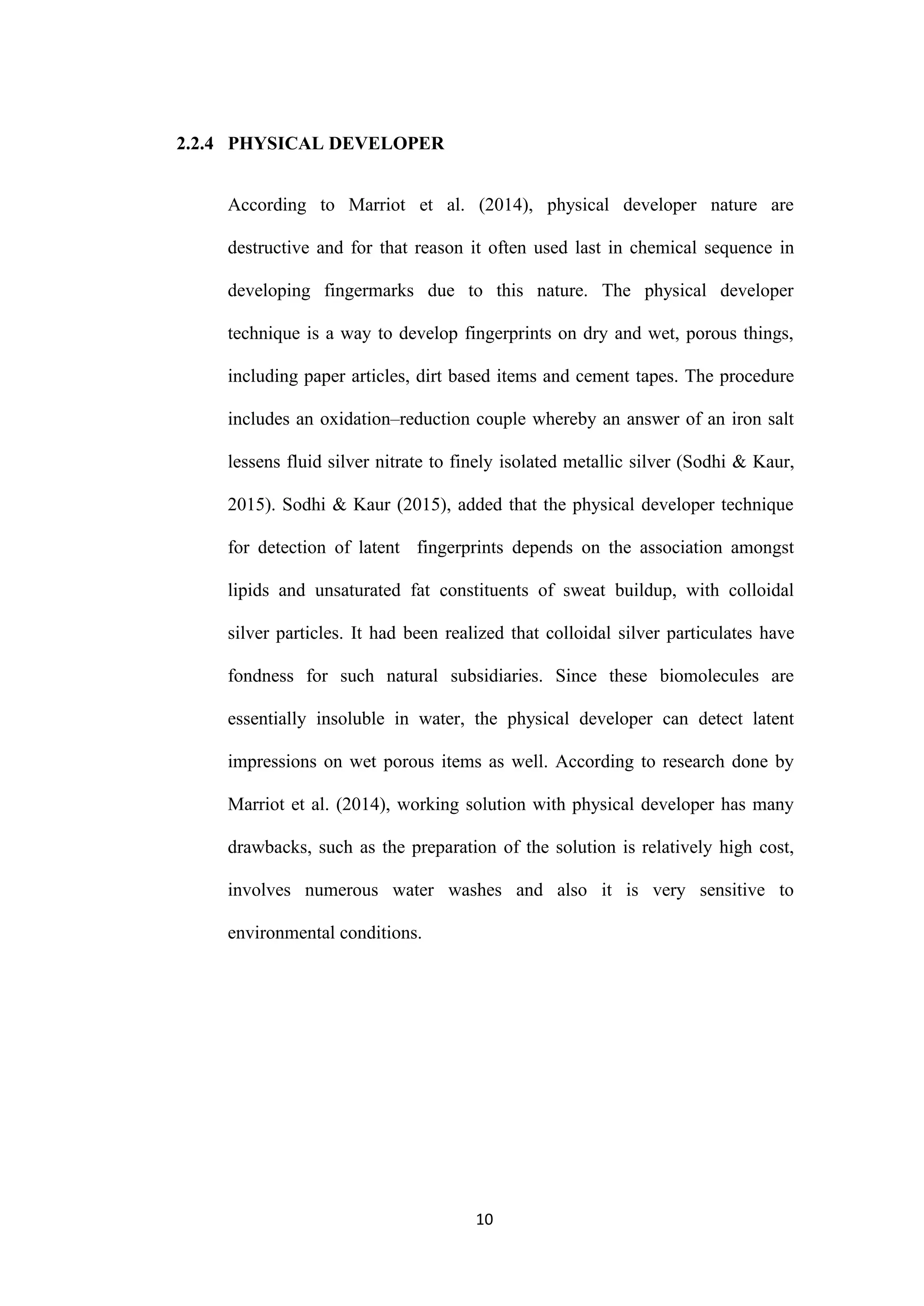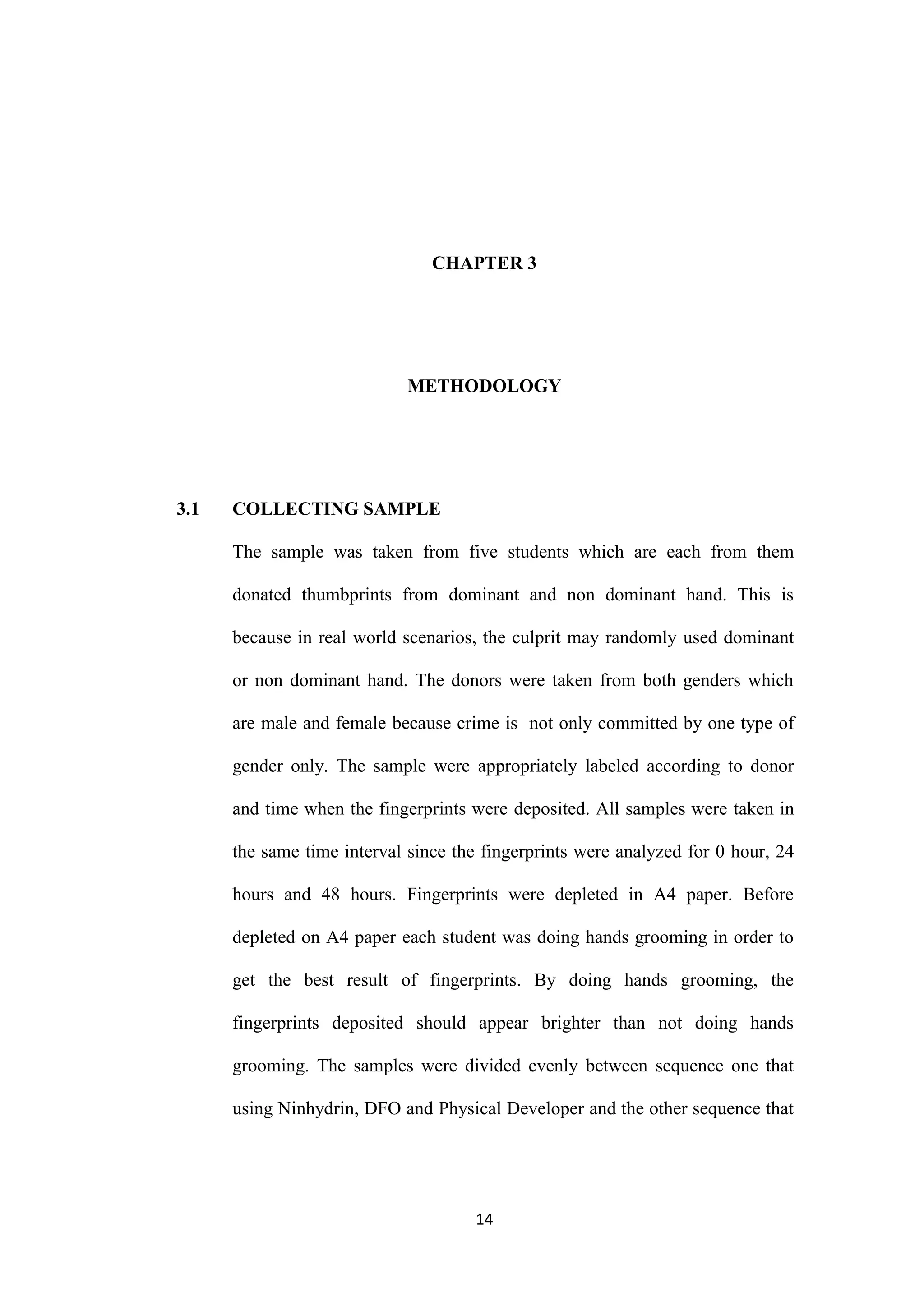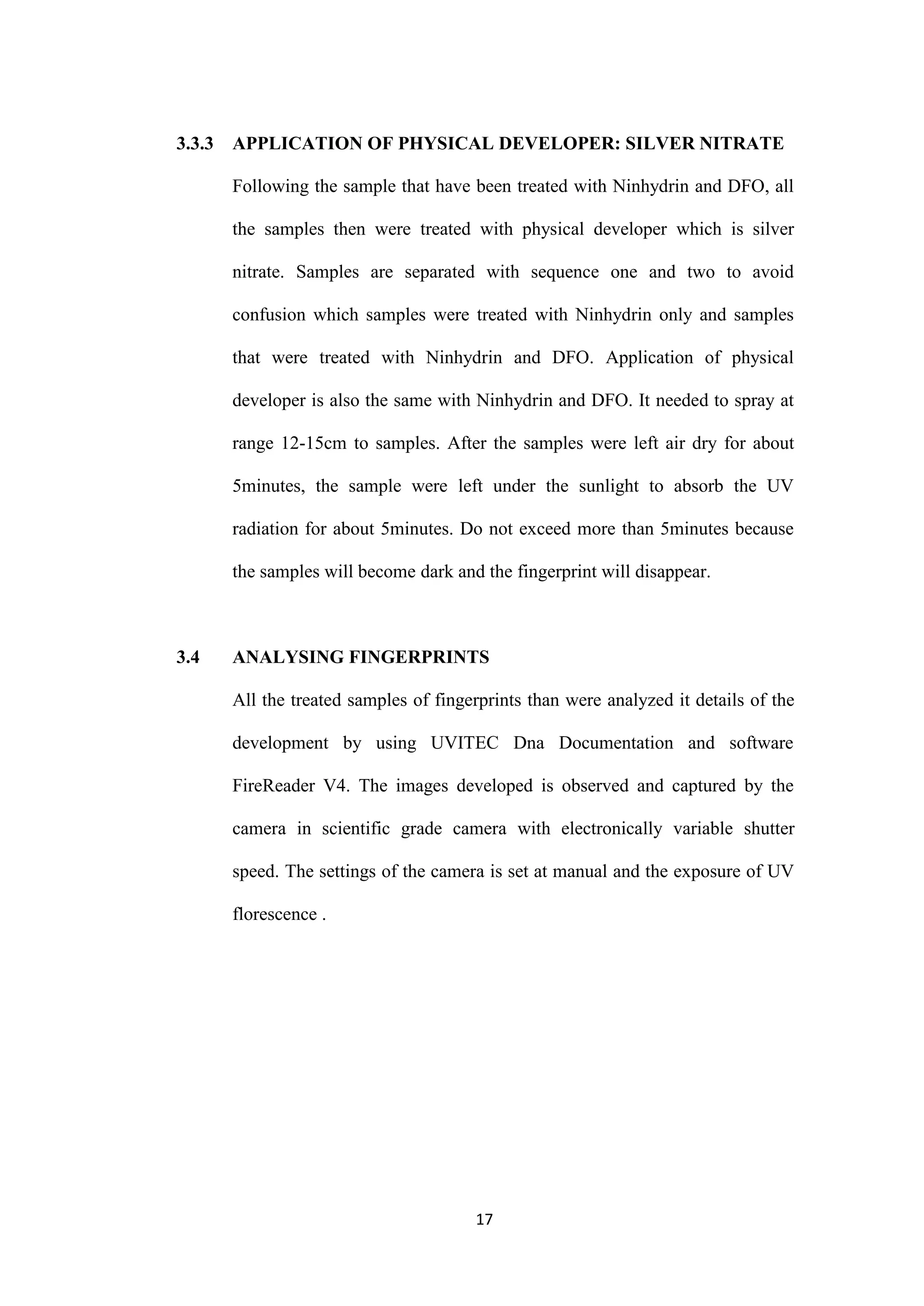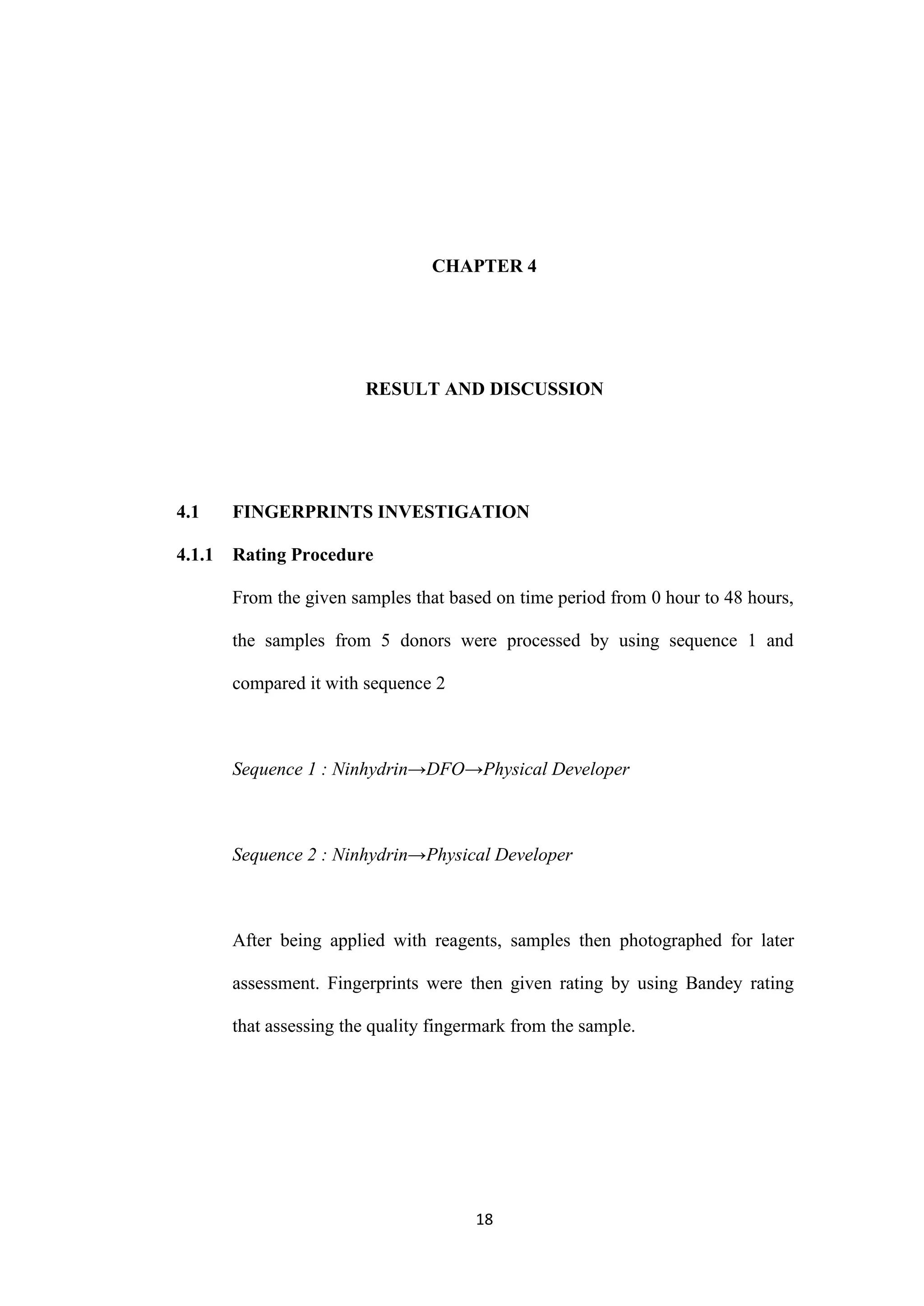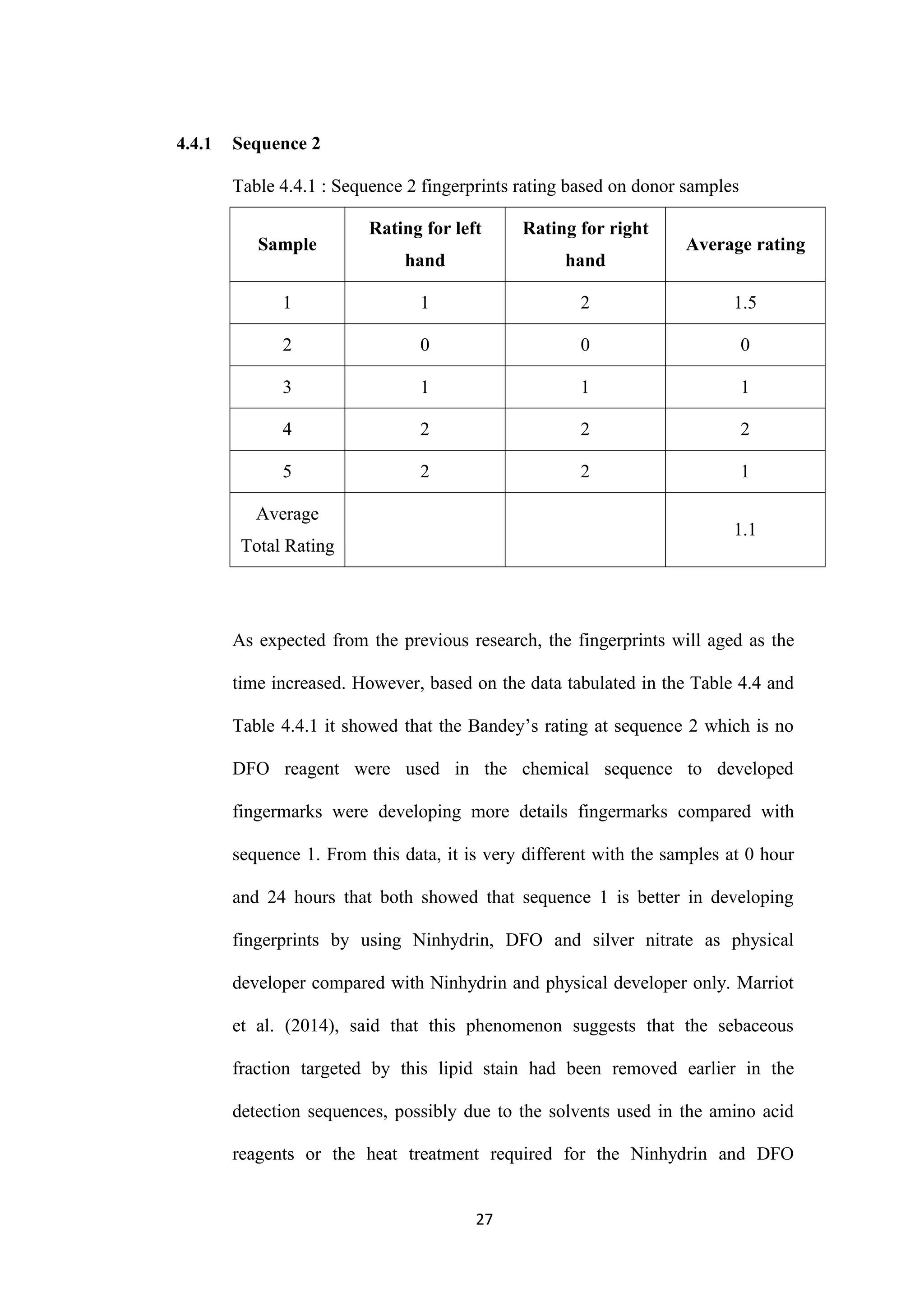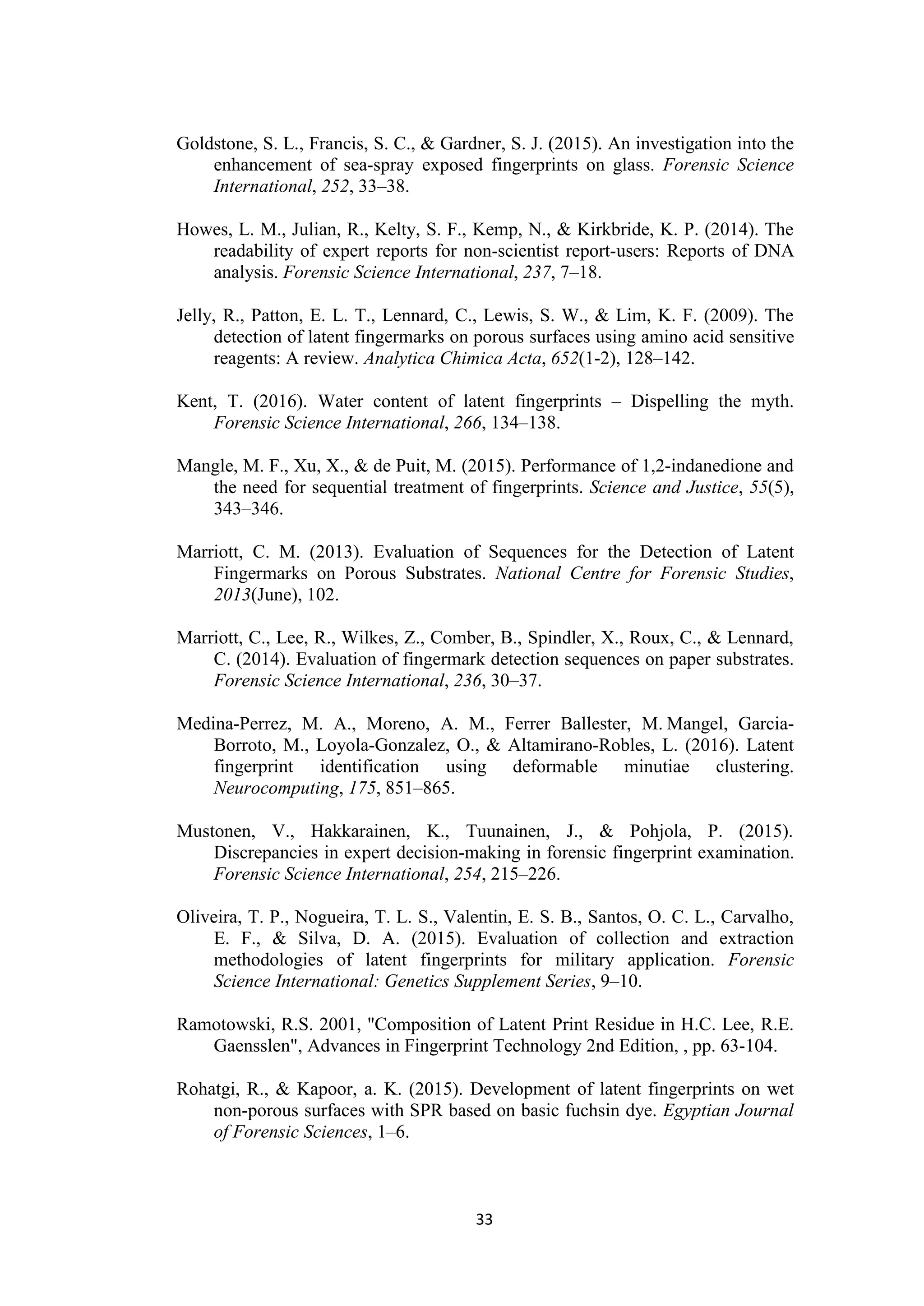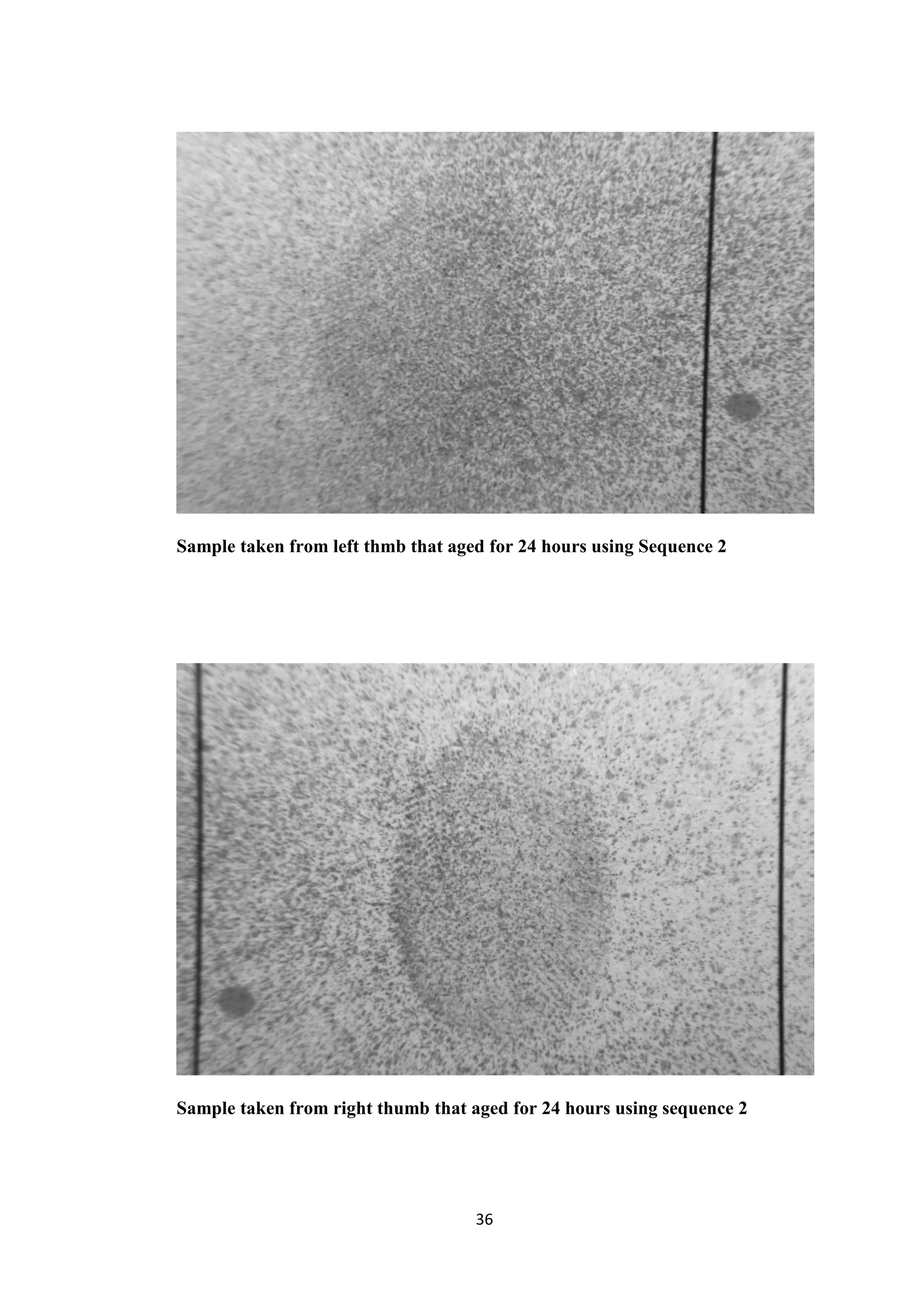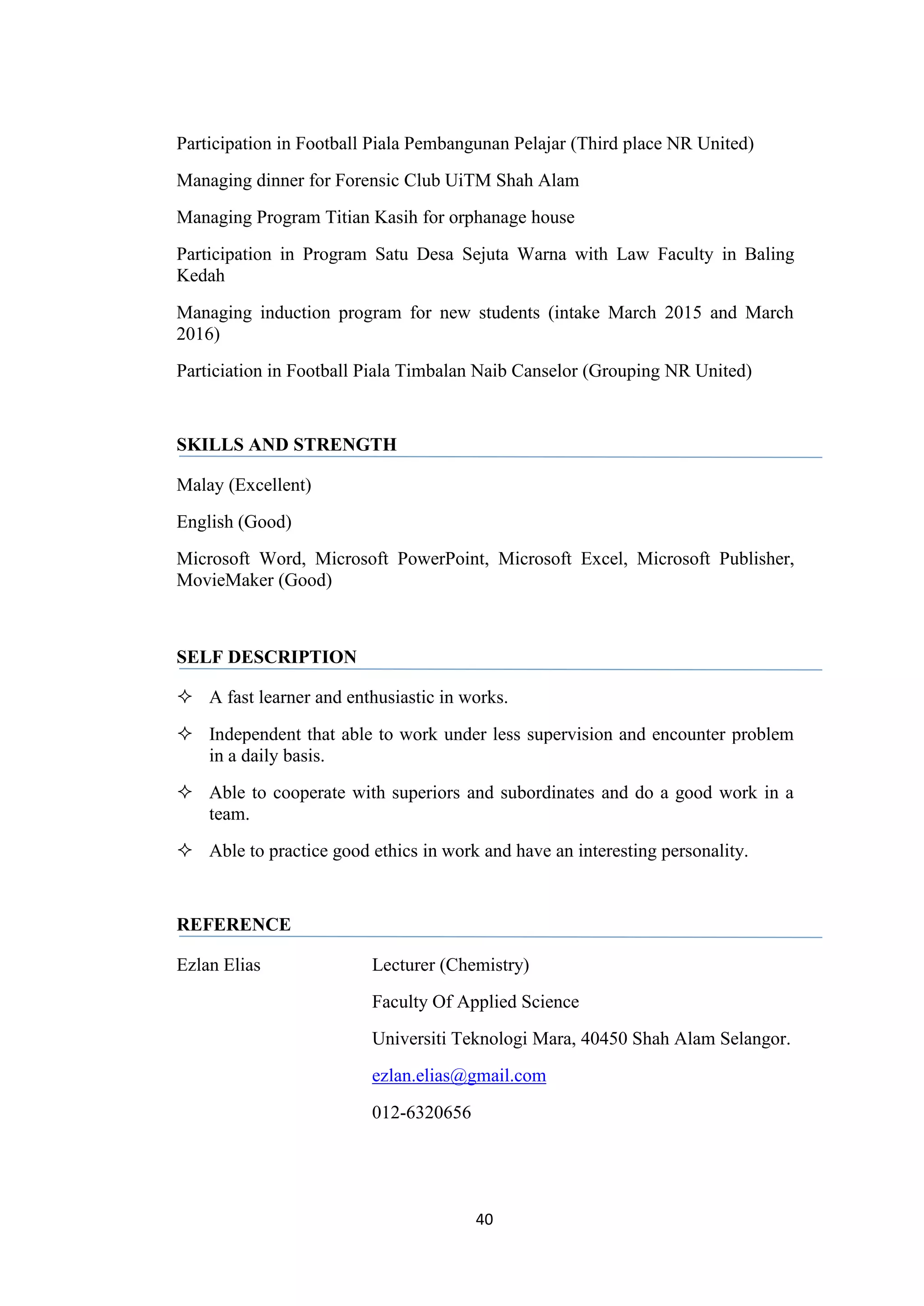The document discusses latent fingerprint detection and enhancement methods. It provides background on fingerprints and their chemical composition. Various chemical enhancement sequences are examined, including ninhydrin, 1,8-diazafluoren-9-one (DFO), and physical developer. The document also reviews using these sequences to develop latent fingerprints deposited on paper at different time intervals. It aims to determine the sequence that produces higher quality fingerprints for use as forensic evidence.

